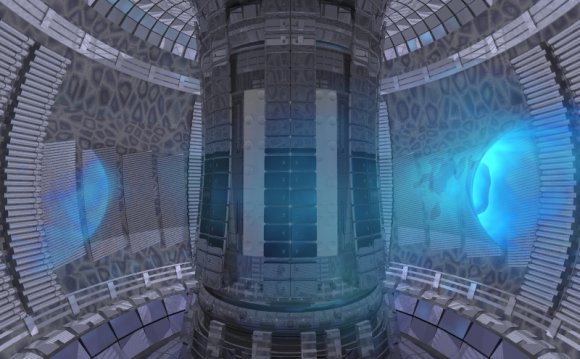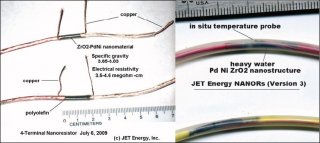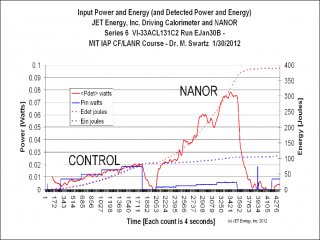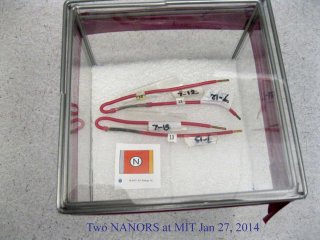
 Technology
Technology
July 2, 2015 by vessynik
I received from Alessandro Cavalieri the following contribute about the NANOR reactor developed by JET Energy, a clean promising energy multiplier very different from Andrea Rossi’s E-Cat:
I would like to resume and integrate the interesting paper “Dry, preloaded NANOR®-type CF/LANR components” by Mitchell R. Swartz (JET Energy, Inc., USA), Peter L. Hagelstein (Massachusetts Institute of Technology, Cambridge, USA) and others, recently published by Current Science.
 Indeed, the ZrO2–PdNiD NANOR®-type reactor is a device capable of significant energy gain over long periods of time with reasonable reproducibility and controllability. So, it could be used, in the future, as an effective, clean, highly efficient, energy production system.
Indeed, the ZrO2–PdNiD NANOR®-type reactor is a device capable of significant energy gain over long periods of time with reasonable reproducibility and controllability. So, it could be used, in the future, as an effective, clean, highly efficient, energy production system.
The NANOR® components are smaller than 2 cm in length, and with 30–200 mg of active LANR material. Their ‘core’ contains active ZrO2–PdD nanostructured material [Zr (66%), Ni (0–30%), and Pd (5–25%) by weight], loaded with additional deuterium (D) to achieve loadings (ratio of D to Pd) of more than 130%.
 Indeed, nanostructured materials have incredibly large surface area to volume ratios. Second, many also have new unexpected quantum mechanical properties: they enable quantum confinements, surface plasmon resonances, and superparamagnetism.
Indeed, nanostructured materials have incredibly large surface area to volume ratios. Second, many also have new unexpected quantum mechanical properties: they enable quantum confinements, surface plasmon resonances, and superparamagnetism.
A two terminal NANOR™ device containing active ZrO2-PdNiD nanostructured material.
The ZrO2–(PdNi)D is prepared in a complicated process that begins by oxidizing a mixture of zirconium oxide surrounding metallic palladium, nickel or Pd–Ni islands, located and dispersed within the electrically insulating zirconia dielectric.
The desired nanostructure islands of NiPdD have characteristic widths of 2–20 nm size. This nanostructure size is selected because it can react cooperatively, generating large amplitude, low frequency oscillations. The characteristic width is between 7 and 14 nm.
 The zirconia dielectric matrix is insulating at low voltage and keeps the nanoscale metal islands electrically separated. It also prevents the aggregation of the islands. Each nanostructured island acts as a short circuit elements during electrical discharge.
The zirconia dielectric matrix is insulating at low voltage and keeps the nanoscale metal islands electrically separated. It also prevents the aggregation of the islands. Each nanostructured island acts as a short circuit elements during electrical discharge.
The fuel for the nanostructured material in the core is deuterium, and the product is believed to be de novo 4He produced by the deuterium fusion. The ‘excess heat’ observed is thought due to energy derived from coherent de-excitation of molecule D2 to ground state 4He.
According to a previous Swartz’s paper, the helium-4 excited state is either the first excited state, or one energetically located above it, all at least 20 million electron volts (20 to ~23+ MeV) above the ground level. This is significant in magnitude and clearly we cannot say that they are “low energy” reactions.









